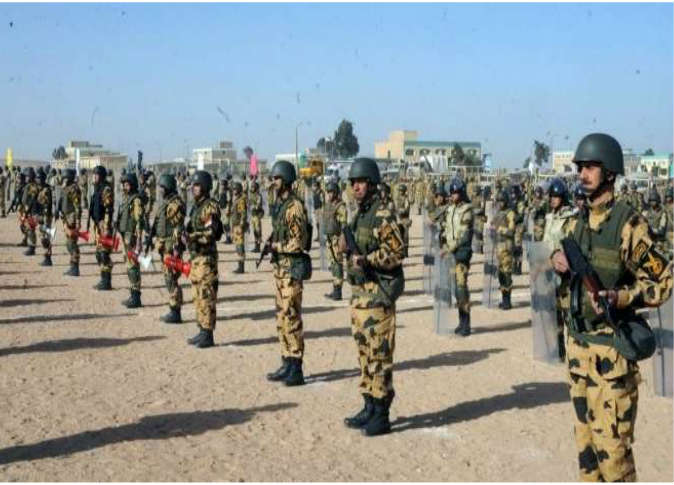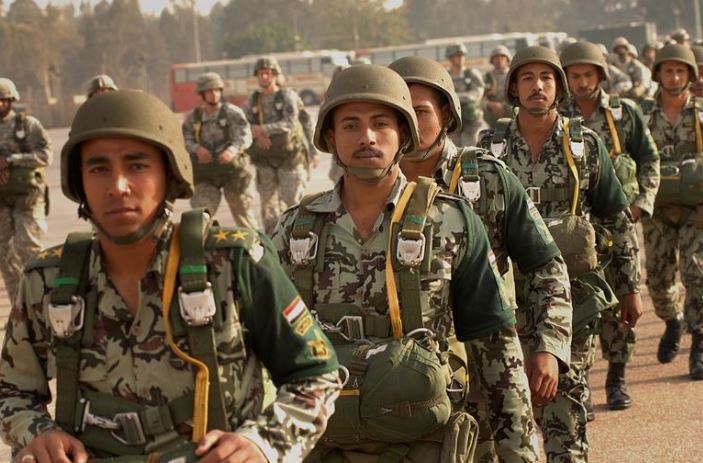
As the violence in Cairo enters its fourth day, the military’s brutality, as recorded on video, stands in contrast with a statement on Monday from Supreme Council of the Armed Forces (SCAF) member General Adel Omara claiming that troops are exercising the utmost self-restraint.
Both sides attribute the start of the violence to the brutal beating of protester Aboudy Ibrahim by military forces inside the parliament building, an act which prompted protesters to clash with soldiers outside.
Only a few hundred people participated in the cabinet sit-in. They displayed artistic skill, with graffiti sprayed on the walls of buildings and protesters reciting poetry throughout the night, as faux coffins commemorated the dead of Mohamed Mahmoud Street, where police clashed with protesters for a week last month, killing about 45 people.
Many protesters participated in the sit-in due to dire economic conditions outside Cairo. Others at the cabinet had been injured in January during the initial protests that led to Mubarak’s ouster.
Gehad Laban, the head of the Revolution’s Injured Union, met last week with Prime Minister Kamal al-Ganzoury and SCAF member Mohsen al-Fangary to present the demands of the injured. Laban says that the negotiations were nearing a successful end and over 100 protesters were planning to end their sit-in after the authorities took steps to answer their demands.
“There was a way to end the sit-in peacefully,” says Laban. “Over 100 were about to end their sit-in. Then there would have been very few left.” Those who vowed to stay until Ganzoury stepped down planned to stop the PM from entering his office, but little more, thereby making the sit-in much less harmful to authorities than the violence that has been raging since Friday.
Protesters fail to understand why the military escalated the violence. “Whether the military decided to escalate the violence, or wasn’t able to control its soldiers, who started the violence on their own, these are both catastrophes in either case,” says Yasser al-Hawary, a member of the Justice and Freedom movement, which remained at the sit-in until it was broken up.
On 14 December, some 50 protesters fell sick from food poisoning after free meals were handed out to them earlier that day. An air of suspicion permeated the sit-in, bordering on the paranoia, as protesters suddenly became very cautious about food entering the camp. Most people suspected the poisoning was intentional.
The behavior of troops in the three days following suggest a degree of detachment between them and the military leadership. General Omara announced on Monday that military forces were only defending state buildings and did not assault the protesters. However, scenes on the ground show a level of violence that contradicts the general’s statement.
The clashes left over 10 protesters dead, some with bullet wounds, although the general vehemently denies security forces were armed with live rounds. As of Monday night, fresh reports were surfacing of snipers atop the Mugamma building in Tahrir Square, shooting protesters below.
Earlier, security forces were videotaped brutally assaulting protesters, including women, beating them after they had already lost consciousness. Eyewitnesses also videotaped forces attacking protesters with rocks, fireworks and water, in addition to guns.
Political scientist Samer Soliman expects that the military might not be in total control of its forces. “After the military’s charges against the protesters, and being told that they are destroying the nation, it is possible for the forces to get out of control once there is friction with protesters,” says Soliman.
Similar contradictions exist on the side of protesters, as they continuously argue about the use of force from their side. As some protesters threw Molotov cocktails at a government building in Qasr al-Ainy Street on Friday night, others summoned fire fighters and tried to dissuade protesters from further violence. When the fire fighters failed to arrive, protesters brought fire extinguishers to put the flames out themselves.
Eyewitnesses state that protesters saved rare books from inside the burning Institut d’Egypte, which was set on fire on Friday night by unknown people. Some protesters believe that people in civilian clothes were were planted among them to start the violence.
“There were thugs that entered the sit-in drunk, and we couldn’t send them away,” says Laban, blaming infiltrators for the ongoing violence. Others are more sympathetic to such so-called mischief-makers, believing them to be reacting to the brutality they have experienced.
This view is echoed in protesters’ demands for retaliation and justice. “It’s normal that when we talk to people, they ask: Who will bring us our rights?” says MP Mohamed Abou Hamed, who was part of failed cease-fire negotiations mediated by a number of public figures on Sunday. Abou Hamed says that accountability for those who assaulted protesters is the first step to convincing them to stop the violence.
Soliman blames the violence on the exclusion of youths from formal political channels. Youths won few seats in ongoing parliamentary elections, the first two phases of which were dominated by Islamist parties.
“There are groups of young, new politicians who have a lot of ambition and self-sacrifice that can be channeled into an incredible, constructive power, but since the regime shut them out, it’s normal that they’ll get it out elsewhere,” says Soliman.
Soliman also blames the violence on frustration among the poorest classes of society due the lack of tangible benefits almost a year after the start the 25 January revolution, a reality which has made them bitter against all forms of authority.




